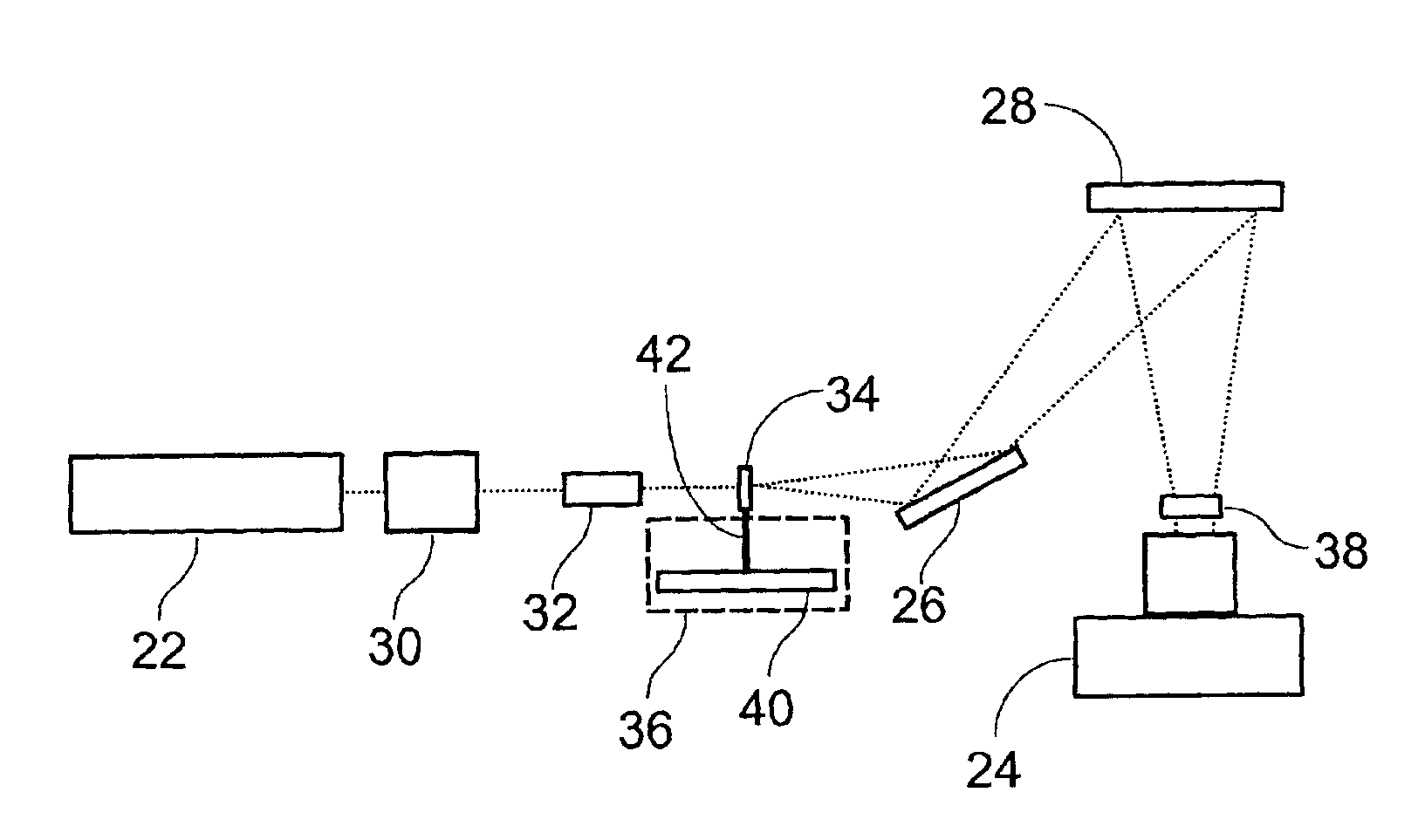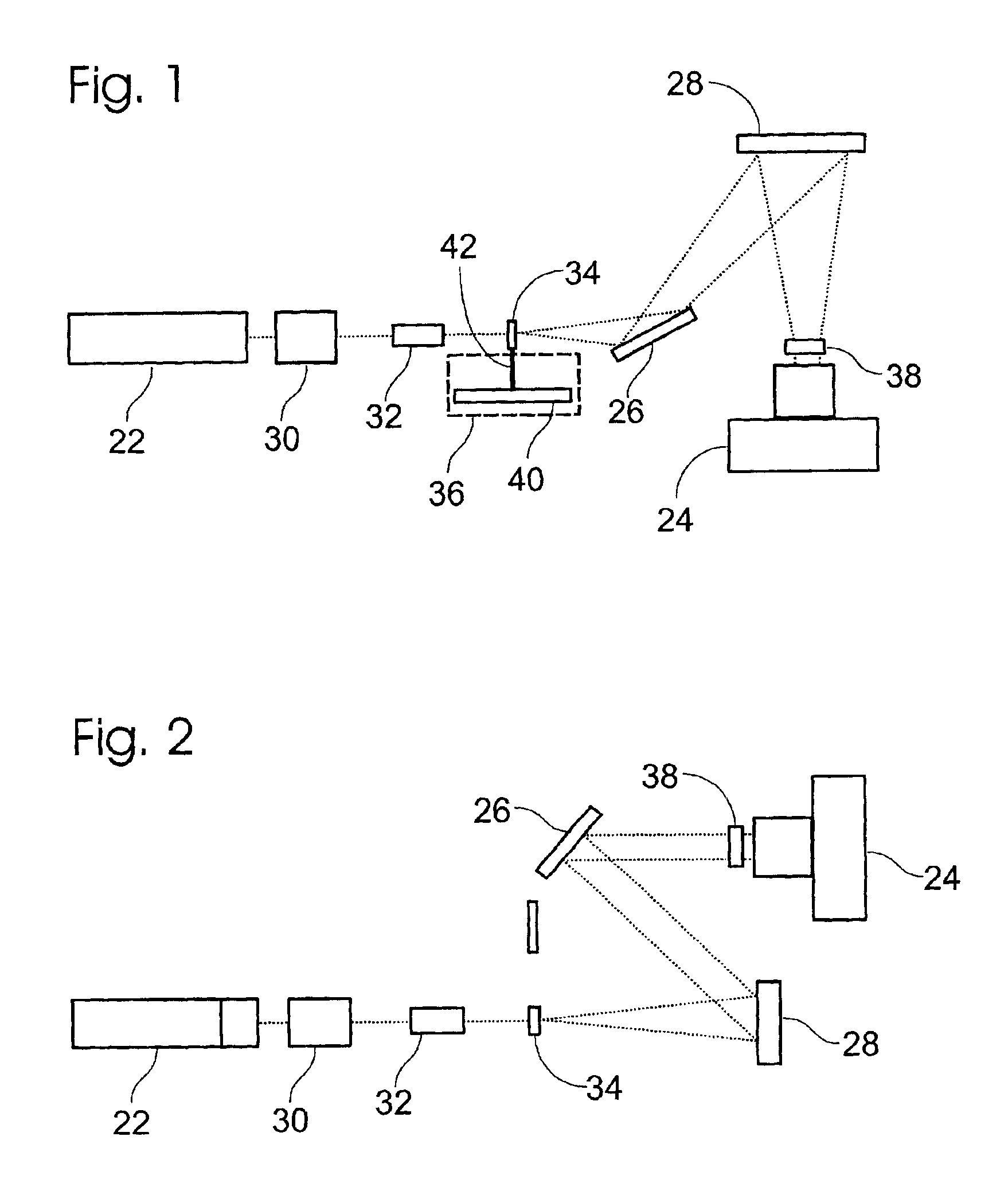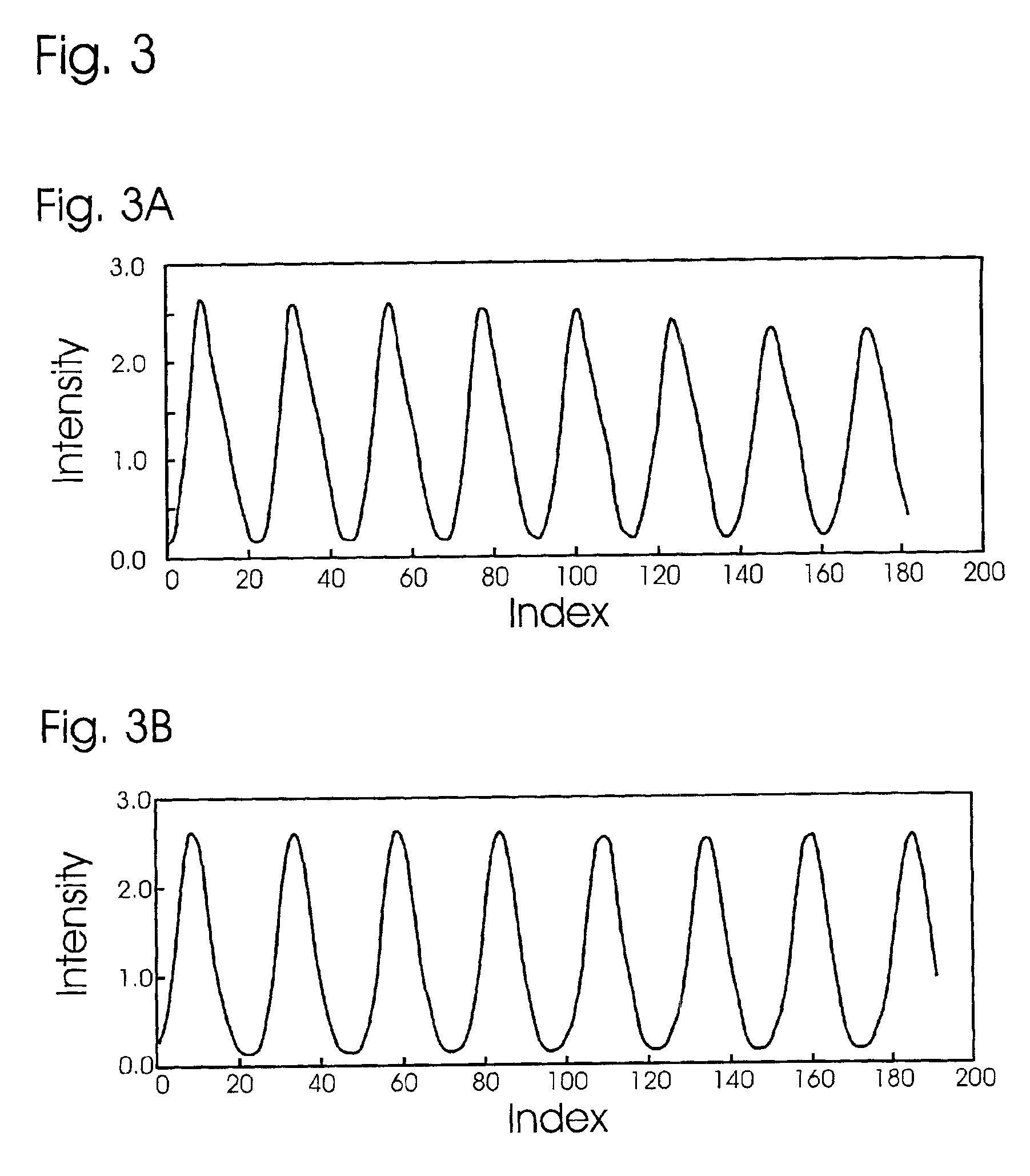Light detection device
a technology of light detection and detection device, which is applied in the field of optical detection, can solve the problems of short life of arc lamps, damage to other electronic components of the system, and the inability to detect light sources, etc., and achieve the effect of improving flexibility and/or reading speed
- Summary
- Abstract
- Description
- Claims
- Application Information
AI Technical Summary
Benefits of technology
Problems solved by technology
Method used
Image
Examples
example 1
Construction of Prototype Apparatus
[0066]This example, illustrated in FIGS. 1 and 2, describes two alternative apparatuses constructed in accordance with aspects of the invention. The apparatuses each include a light source, a wavelength converter, an optical pattern generator, a detector, and an optical relay structure adapted to transmit light to and / or from these optical elements and an examination site.
[0067]The light source and wavelength converter includes a pulsed YAG laser (1060 nm) with harmonic generators that created a third harmonic at 353 nm and a CONTINUUM SURELITE II Optical Parametric Oscillator, which is pumped by the YAG laser. The OPO has a micrometer knob and a look-up table allowing selection of any wavelength from 400-2500 nm.
[0068]The optical pattern generator includes a diffractive optic (commercially available from Edmund Scientific) that produces an 8×8 array of beamlets from the single incoming beam. The divergence angle of the exit beamlets is dependent o...
example 2
Analysis of Illumination Power and Uniformity Across a Microplate
[0072]This example, illustrated in FIG. 3, describes the analysis of illumination power and uniformity across a microplate.
[0073]The power and uniformity of illumination produced by the apparatus were determined using a standard 384-well calibration microplate, i.e., a multiwell microplate that had been coated with a uniform layer of fluorescein. The illumination laser was run at maximum power output, internally triggered at a pulse rate of 10 Hz. The average power out of the OPO was measured at 250 mW, or about 25 mJ / pulse. The time-averaged illumination intensity was calculated to be approximately 0.22 mW / mm2, by considering the illuminated area to be approximately 1200 mm2 (calculated as the sum of the cross-sectional areas of all of the microplate wells, i.e., π×(1 mm)2×384).
[0074]The fluorescence of the calibration microplate was analyzed by recording and analyzing a series of exposures. Specifically, fluorescence...
example 3
Laser Triggering
[0076]This example, illustrated in FIGS. 4 and 5, describes laser (and camera) triggering.
[0077]The illumination laser was utilized in several different operational modes. For the particular laser used in these experiments, the power output and shot-to-shot consistency were maximized when the laser was triggered internally, with the flash lamps firing at a predetermined steady rate close to about 10 Hz. This firing mode produced relatively consistent laser pulse intensity, as shown in FIG. 4. The coefficient of variance of the pulse intensity data in this case was about 142 / 2500, or about 0.057, computed as the standard deviation in the measured results divided by the associated mean. In some experiments, due to idiosyncrasies of the experimental set up, the laser was not triggered internally, but instead was triggered externally from the camera by using the “shutter open” signal. This trigger protocol insured that the laser fired while the shutter was open, resultin...
PUM
| Property | Measurement | Unit |
|---|---|---|
| wavelengths | aaaaa | aaaaa |
| wavelengths | aaaaa | aaaaa |
| wavelengths | aaaaa | aaaaa |
Abstract
Description
Claims
Application Information
 Login to View More
Login to View More - R&D
- Intellectual Property
- Life Sciences
- Materials
- Tech Scout
- Unparalleled Data Quality
- Higher Quality Content
- 60% Fewer Hallucinations
Browse by: Latest US Patents, China's latest patents, Technical Efficacy Thesaurus, Application Domain, Technology Topic, Popular Technical Reports.
© 2025 PatSnap. All rights reserved.Legal|Privacy policy|Modern Slavery Act Transparency Statement|Sitemap|About US| Contact US: help@patsnap.com



